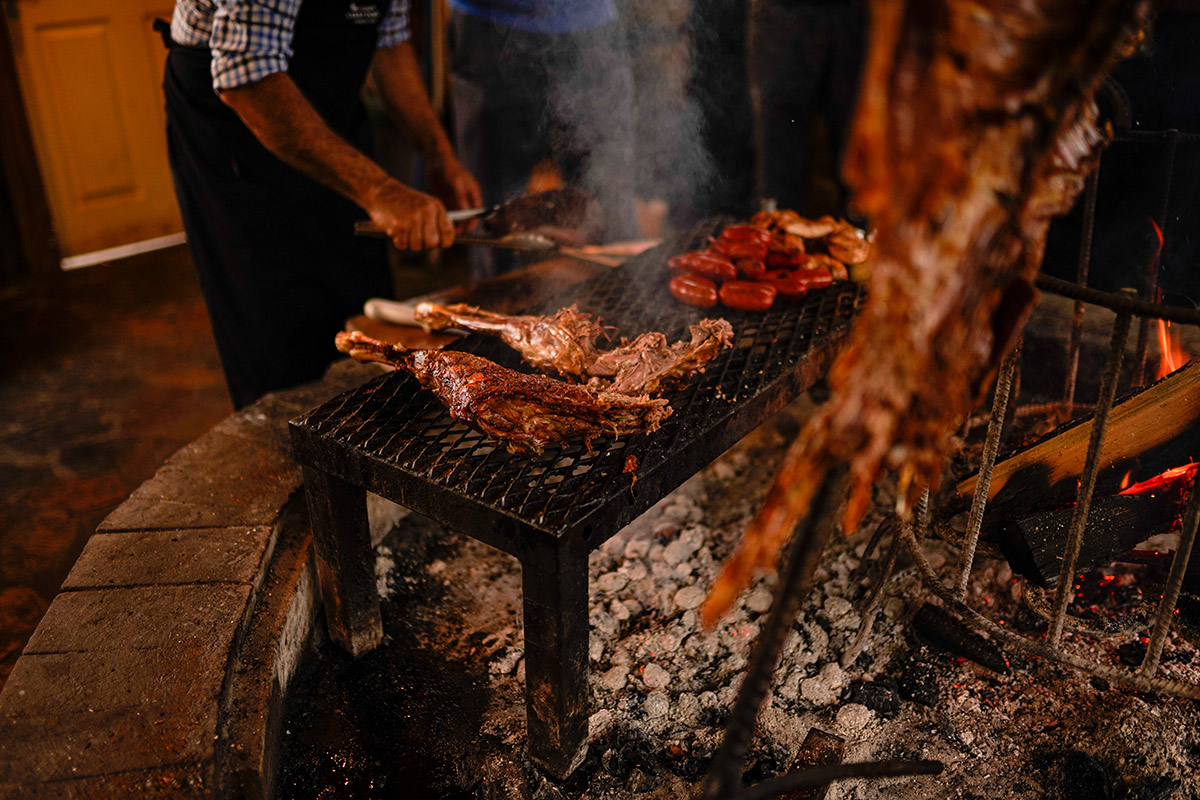Las Torres Patagonia is full of traditions, from its impressive horses galloping through the meadows, its beautiful landscapes seen for generations, and its gastronomy. When talking about food, we must mention another traditional specialty: Patagonian lamb, an ambassador of the culinary culture of the baqueanos. You may have tried lamb in other parts of the world, but this lamb is distinctive. Here, we will tell you more about this exquisite Patagonian dish.
Diet of Coirón
Although lamb is in other parts of the world, Patagonian lamb has a particular taste that distinguishes it from variations you may have tried before. First, this animal, which belongs to a special breed of lamb called “Corriedale,” feeds on grass endemic to the Magellanic region and grows in the Patagonian plains, the coirón. This type of vegetation grows on hills, slopes, and flatlands, forming large bushes, highly desired by animals, and is one of the most important native fodder in the area.
This diet gives lamb meat a different consistency and flavor, giving it a different flavor than other meats when cooked due to its texture, aroma, and taste.
More Important than Beef
The Office of Agricultural Studies and Policies characterized lamb as lean meat containing less fat, nerves, and a higher concentration of iron than traditional red meat.
According to our kitchen manager at Estancia Cerro Negro, Héctor Núñez, lamb is sought after by the most specialized palates for its tenderness, juiciness, and organoleptic properties. It’s an authentic sensory experience taking a bite of lamb. In addition, lamb meat has a higher concentration of zinc and iron than beef; therefore, it has more benefits, as iron improves the synthesis of hemoglobin in the blood, while zinc allows carbohydrates and fats to be processed better.
Meat with Less Fat
Corriedale lambs feeding out on the pampa also develop less fat compared to what we can find in bovine. This allows us to see that at the moment of cooking, the embers and the heat use this juice to give a more exquisite flavor to the meat.
Our lamb roasters also use different techniques to take advantage of the small amounts of animal fat to encapsulate the flavors, improve cooking, and ensure that each bite of this traditional Patagonian dish is a delight for the taste buds.
A Special Complement to the Experience
Eating lamb in Las Torres Patagonia is not just sitting to enjoy an exquisite meal. Our team wants your first interaction at Cerro Negro to guarantee immersion in the traditional Baquean experience.
The lamb roast begins to be prepared several hours in advance, so you will receive a traditional welcome when you arrive. This welcome means a drink of mate with our team, listening to the stories of Patagonia and the secrets of preparing a good lamb, and trying different customary beverages. In Baquean tradition, in an almost ceremonious ritual, the space used to roast the lamb is also a place to share, chat, and surround the warmth of the fire. Here, the chef will offer small bites of lamb to taste directly from the hot coals—a great start to the rest of the meal.
A Generational Patagonian Dish
After this first tasting, the dishes are served, and the lamb is accompanied by potatoes or vegetables roasted on the embers. Salads with vegetables from our organic garden are also a part of the meal.
As for the drink, our experts recommend red wine, since it goes very well with this type of lamb, lean of fat. If guests want to expand on the traditional wine, they can try “candola,” better known in other parts of Chile as “navegado,” a hot drink made from red wine, orange slices, sugar, and spices.
At Las Torres Patagonia, we prepare everything so you can live the Patagonian experience in all its splendor. If you want more information or to book a stay to enjoy these moments, click here!
If you want more information about Cerro Negro, write to [email protected]
